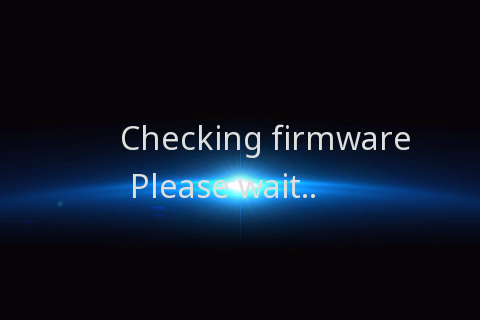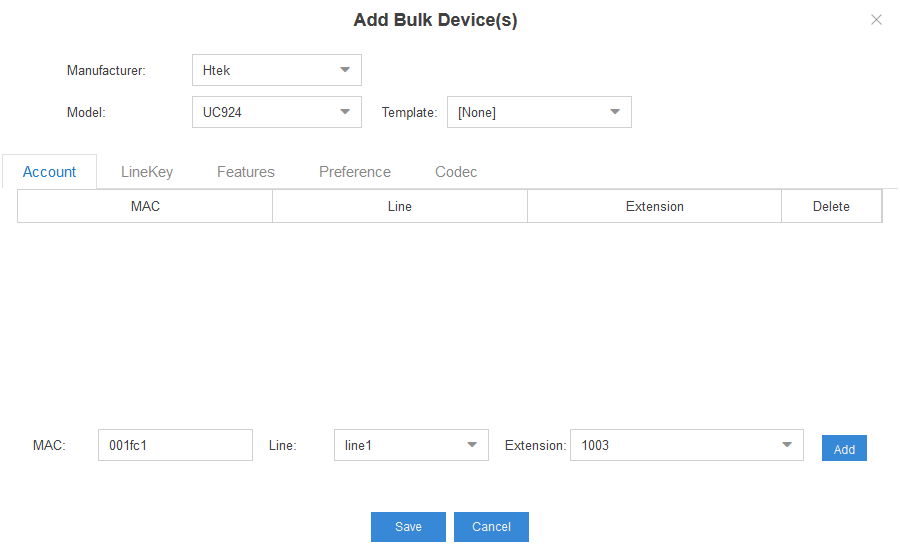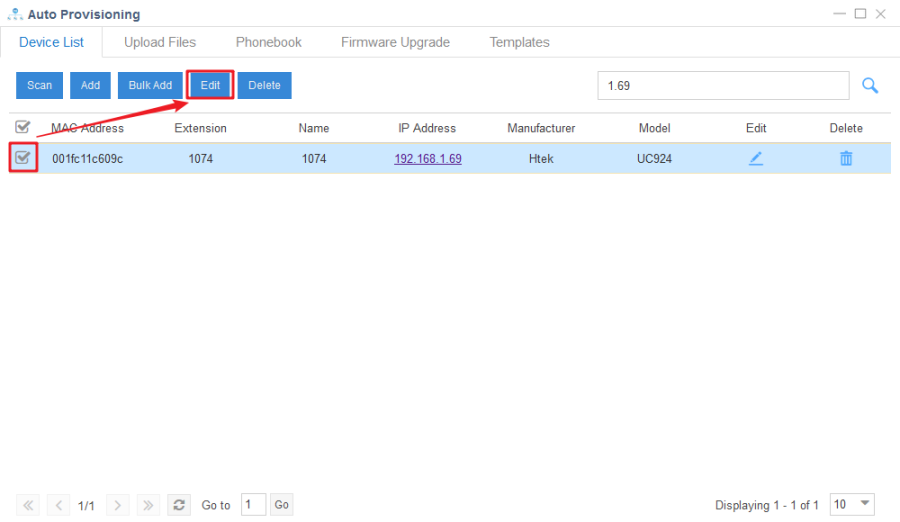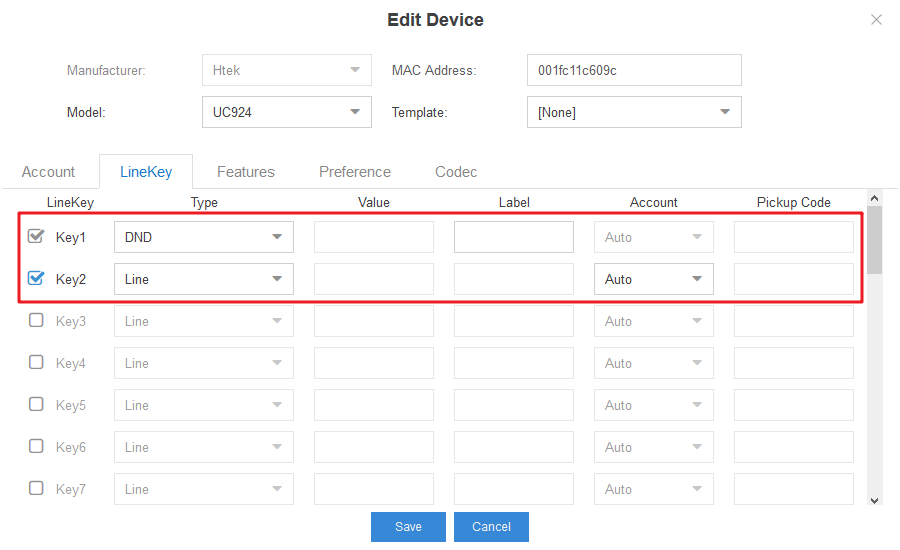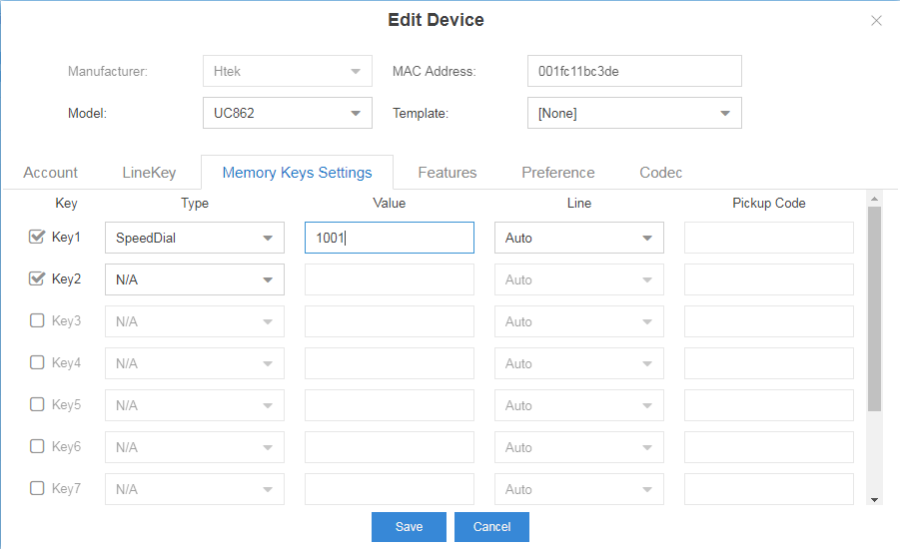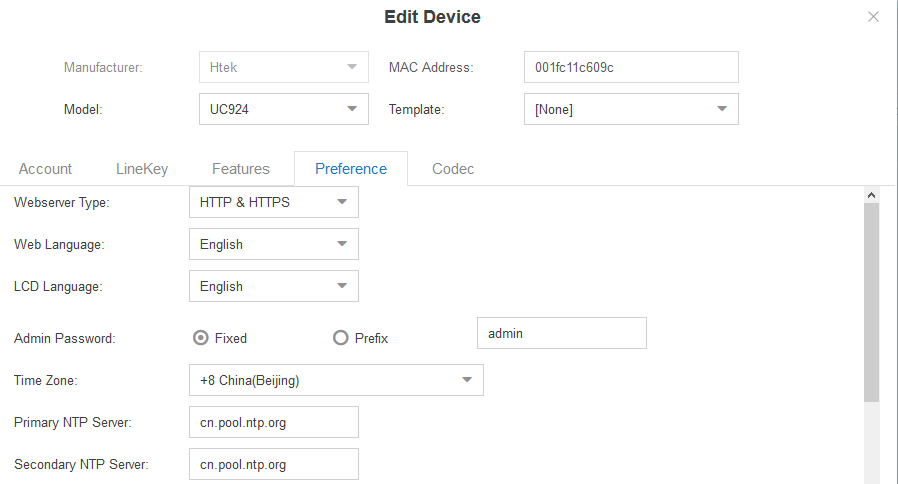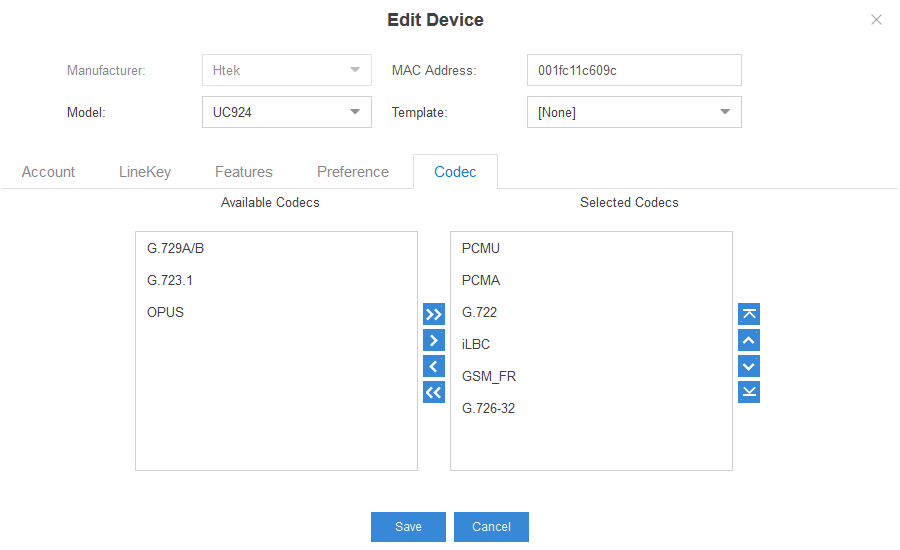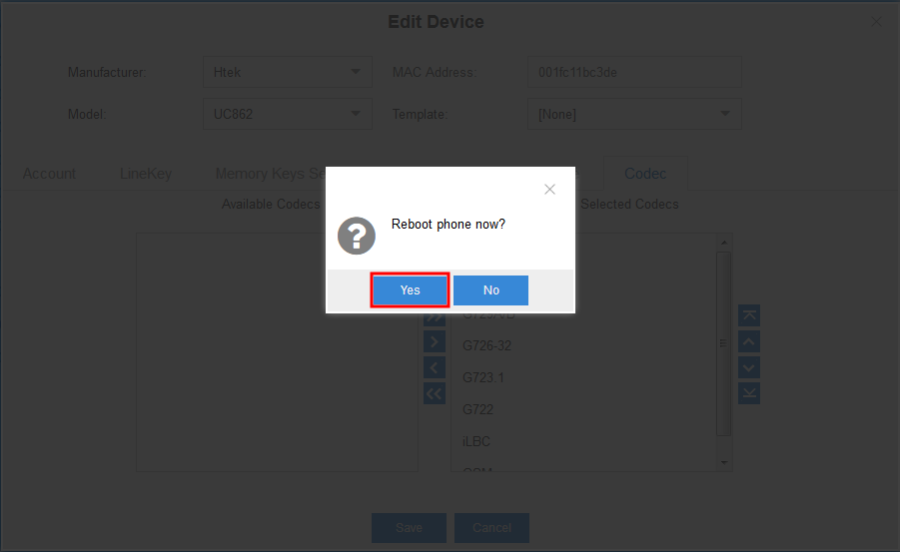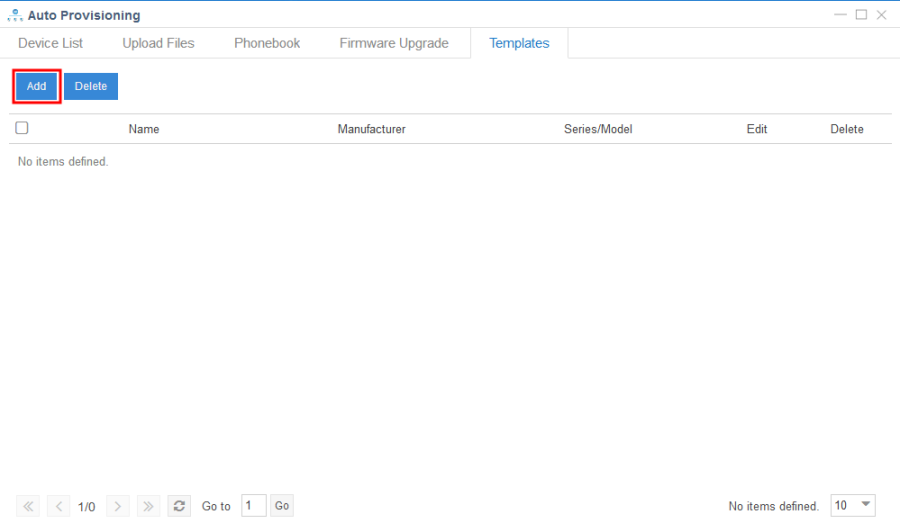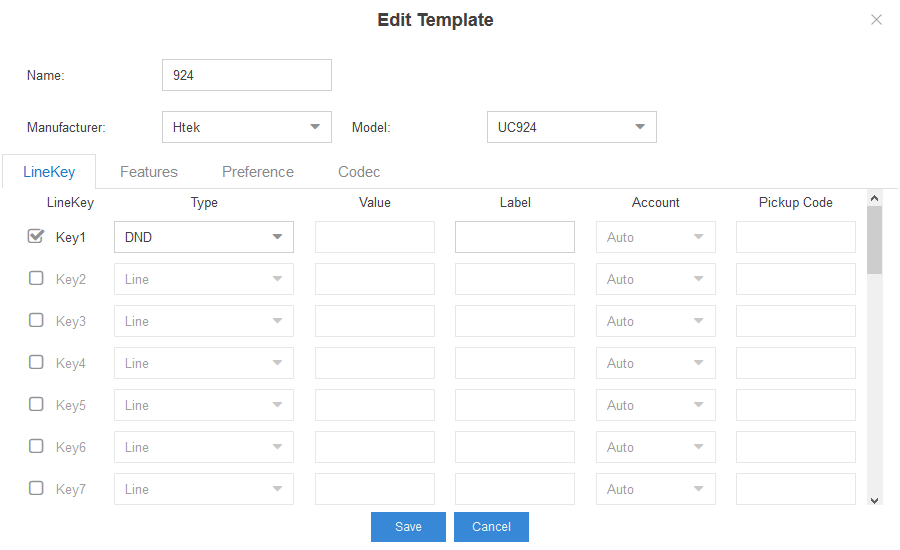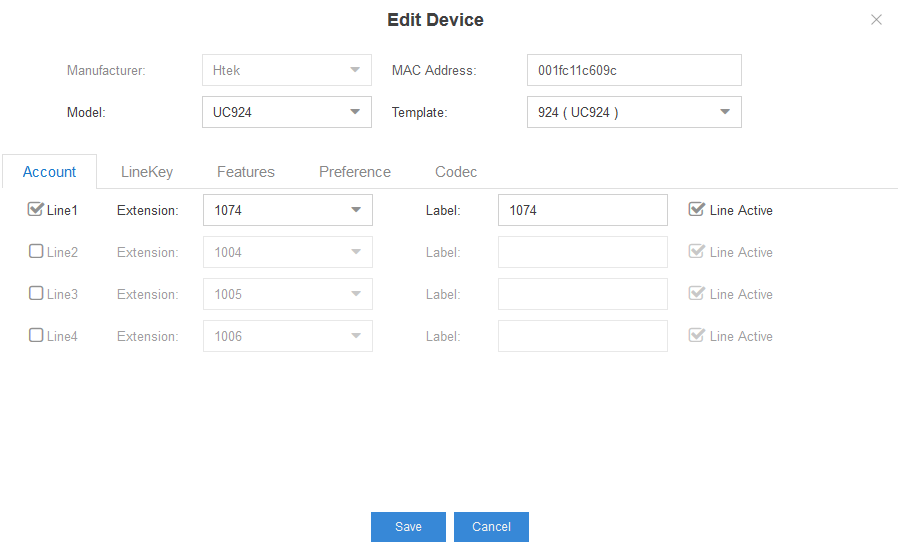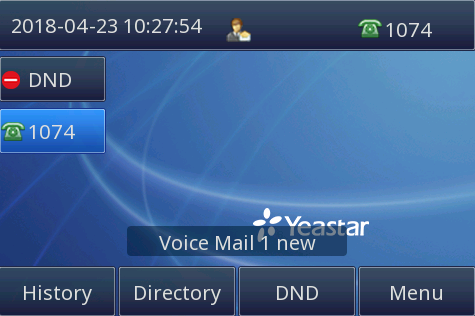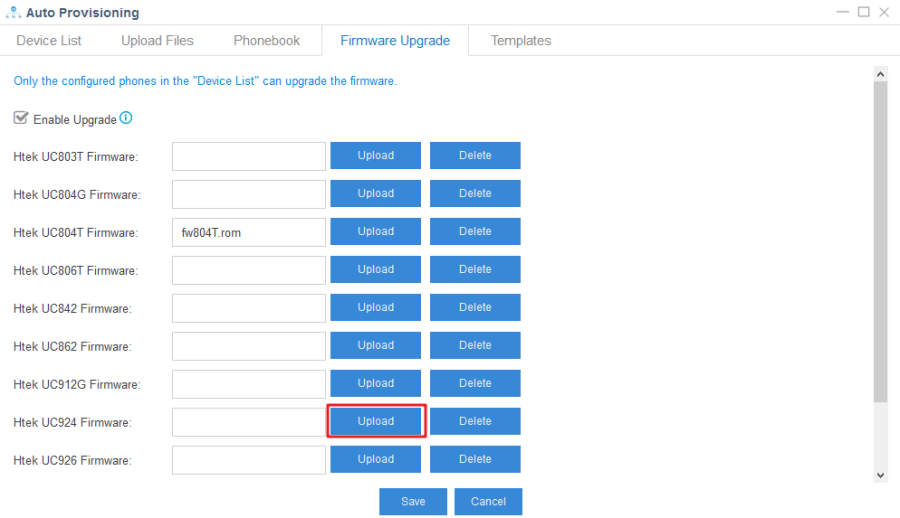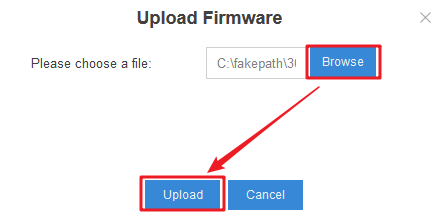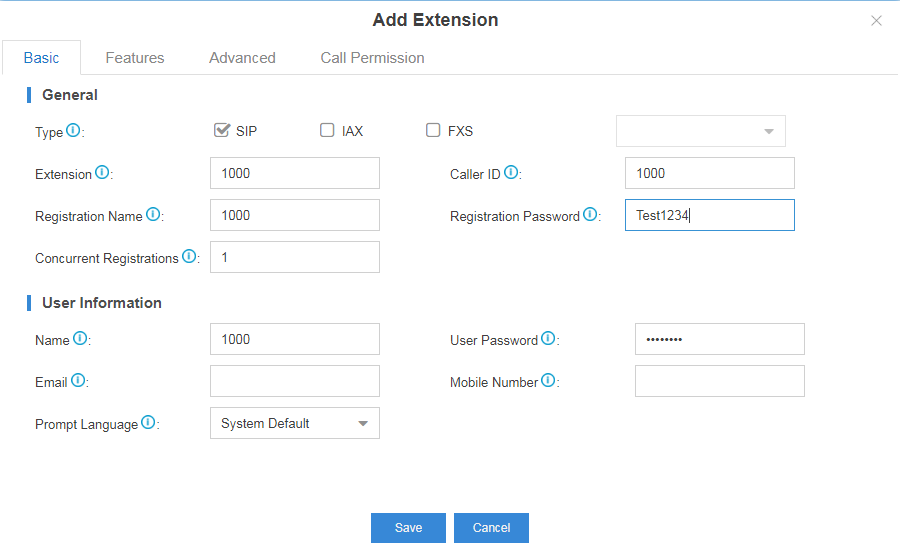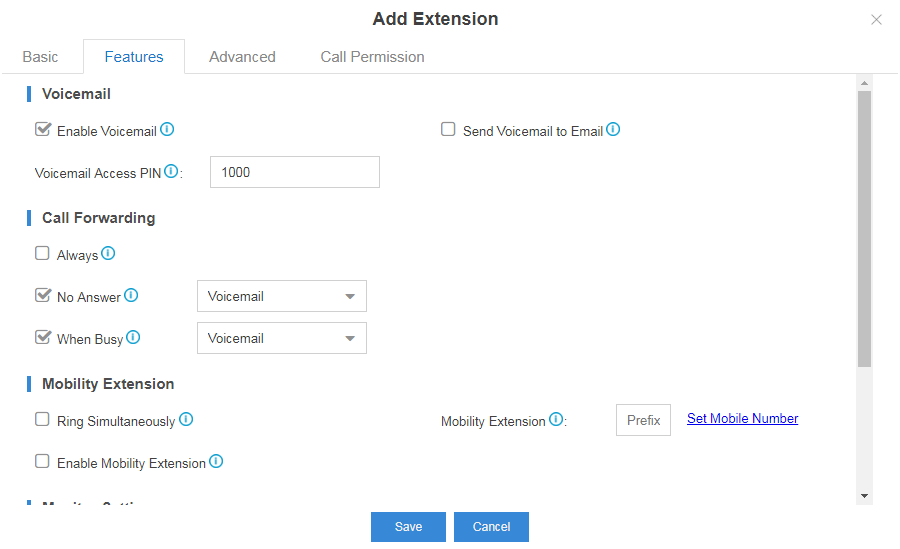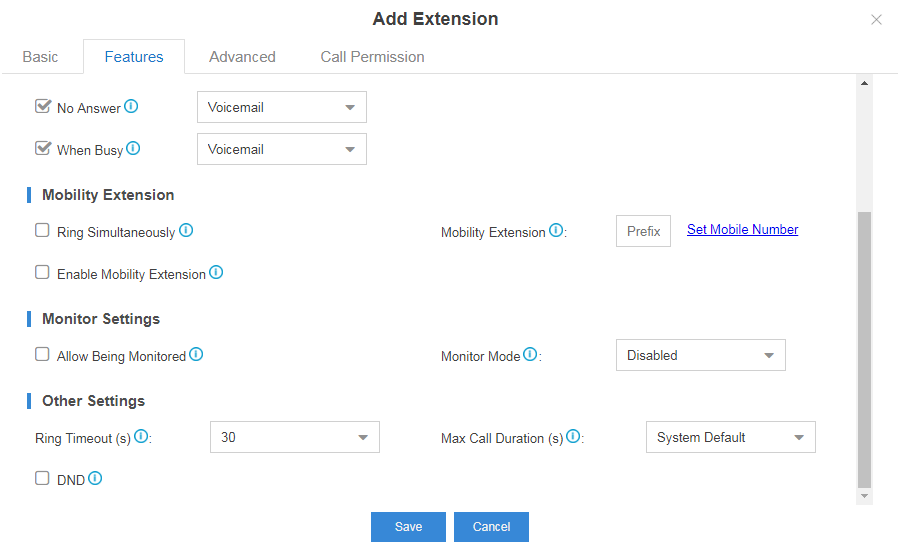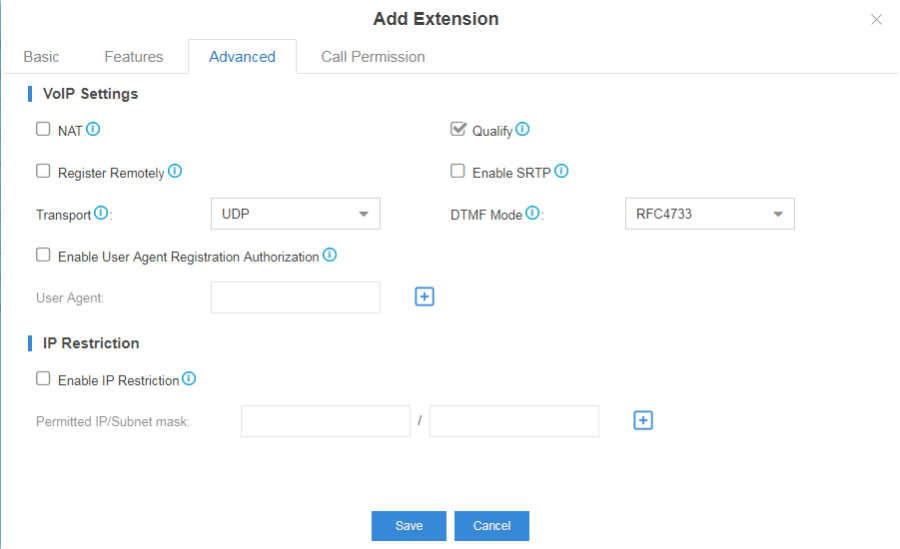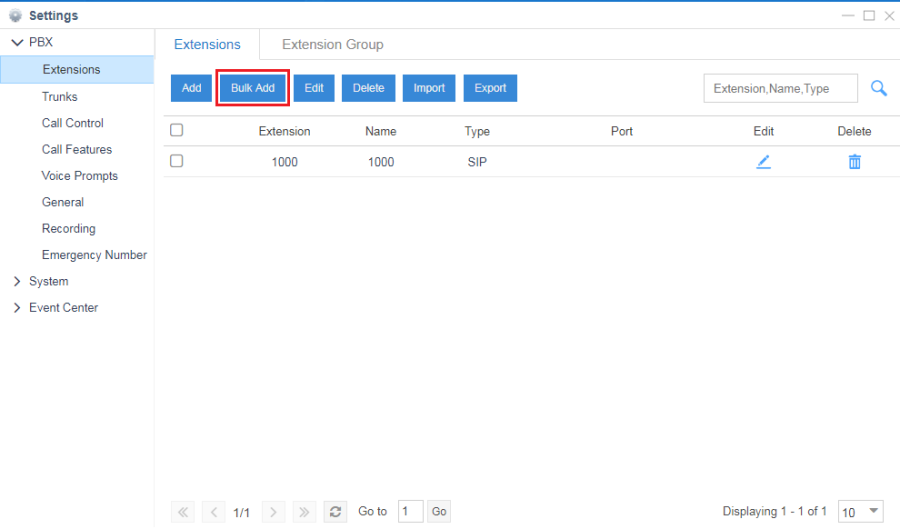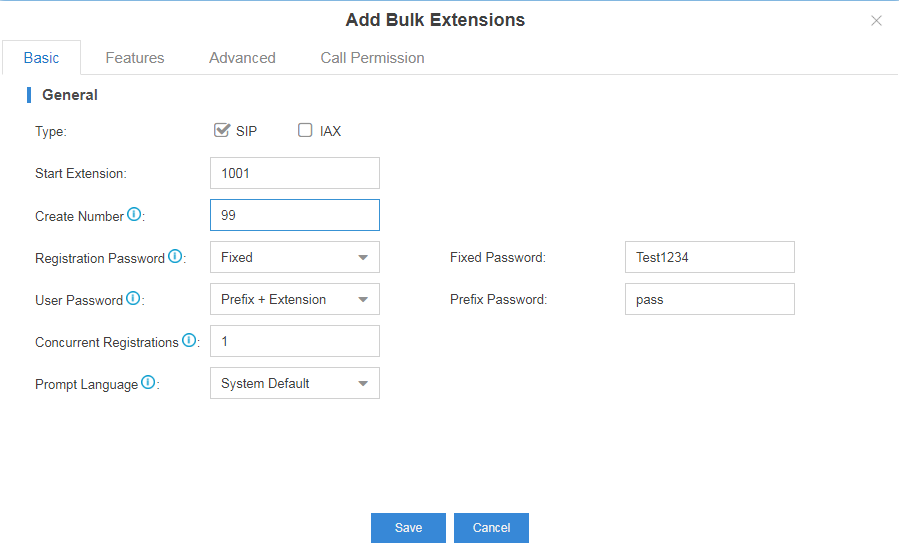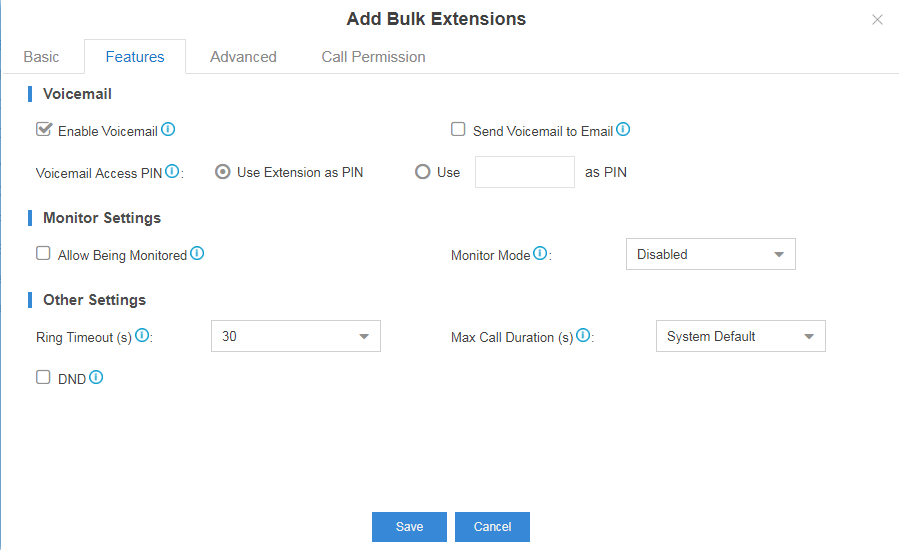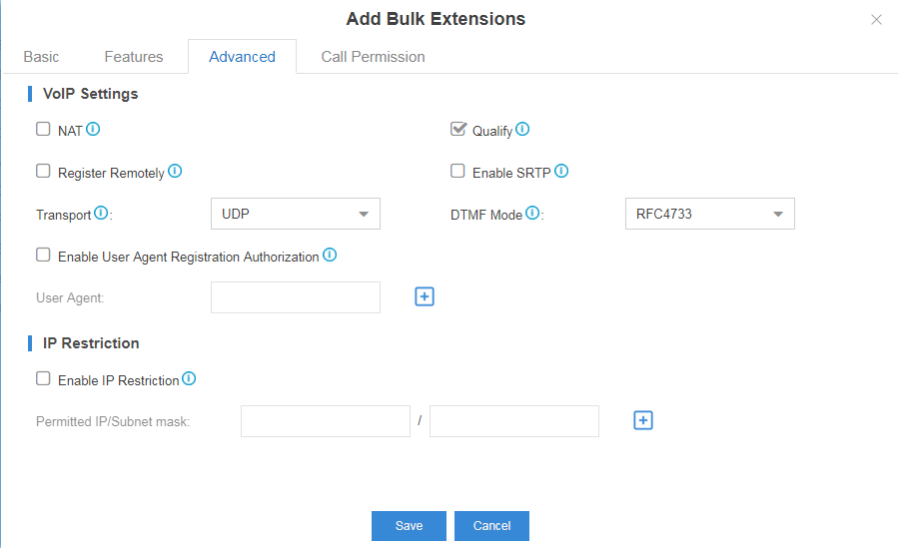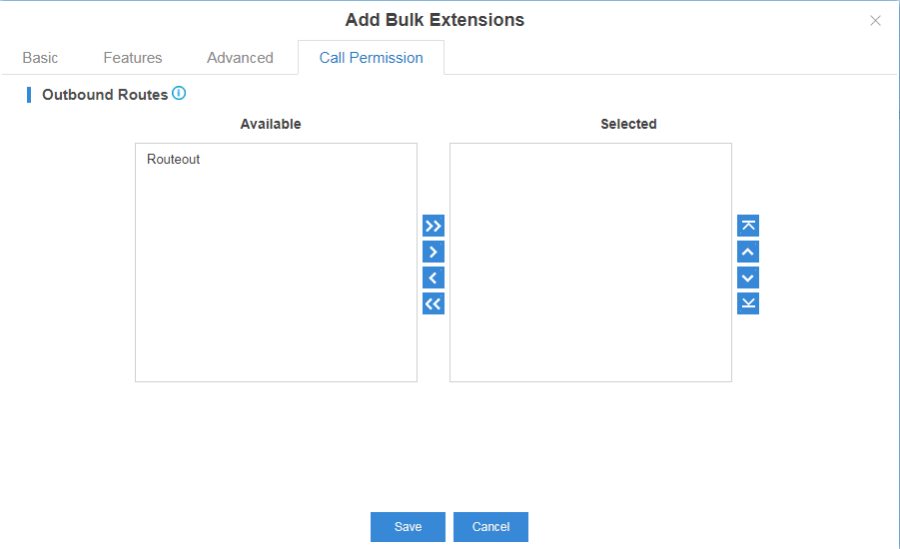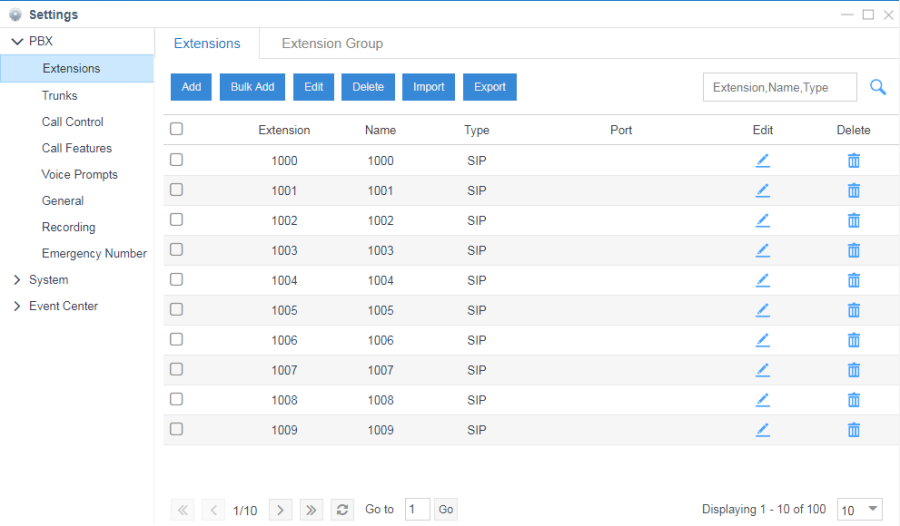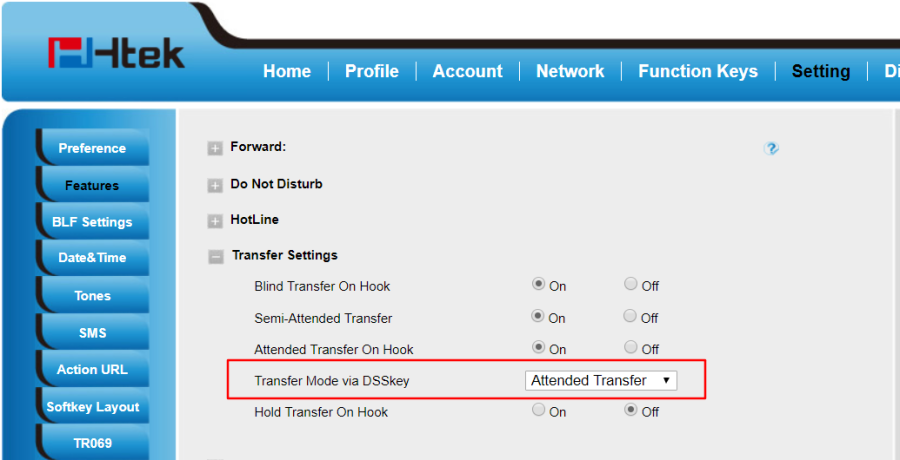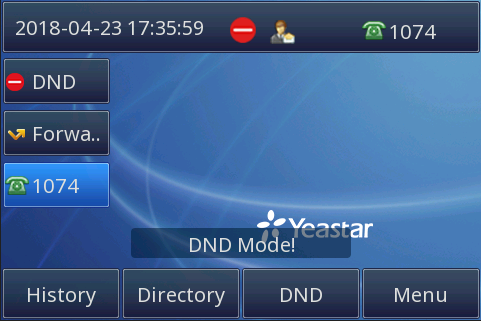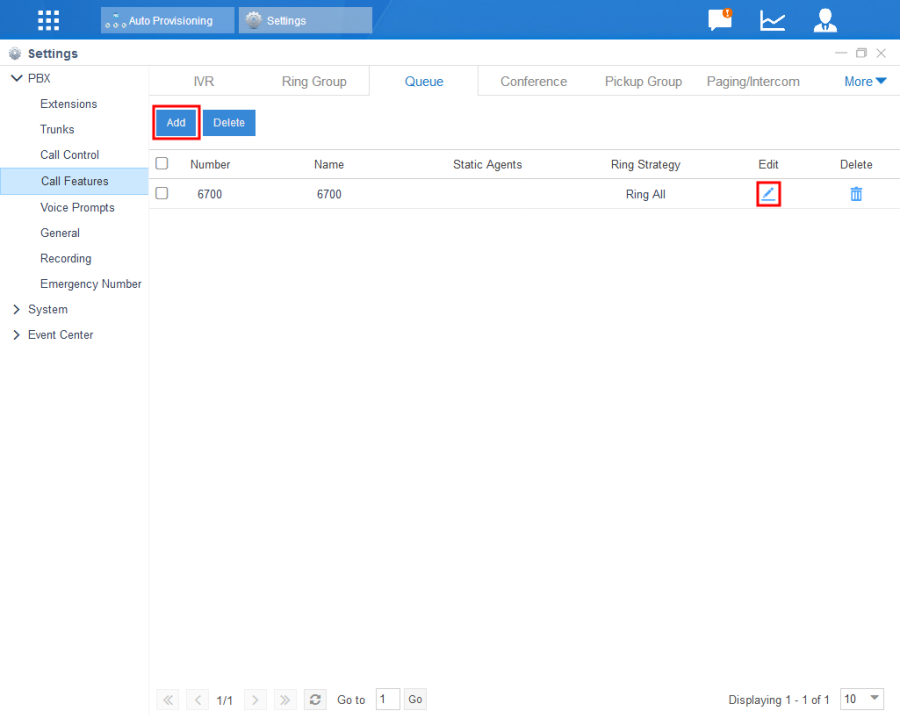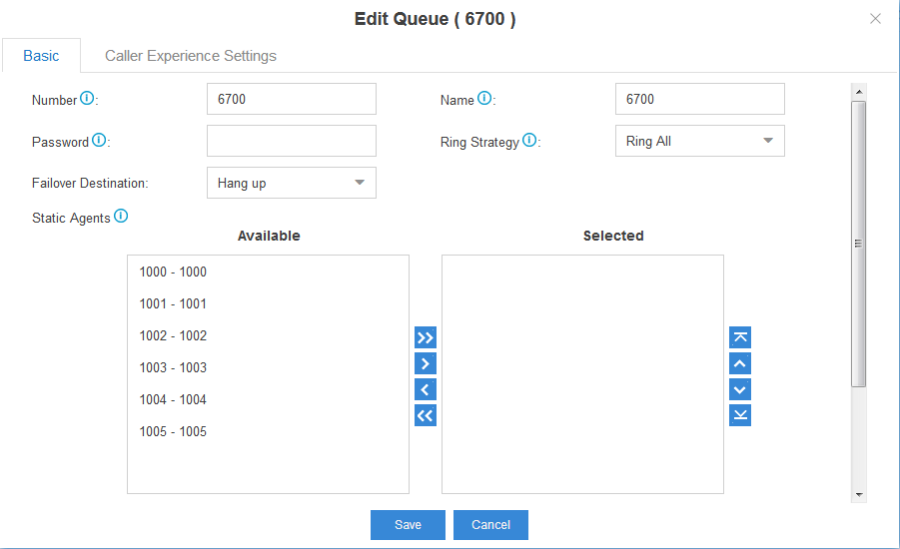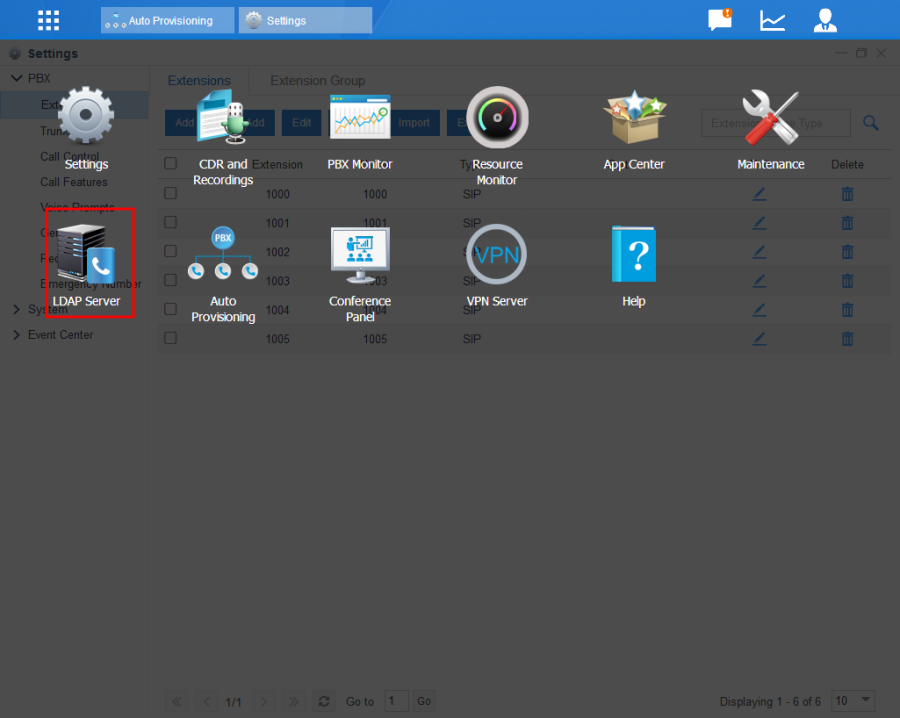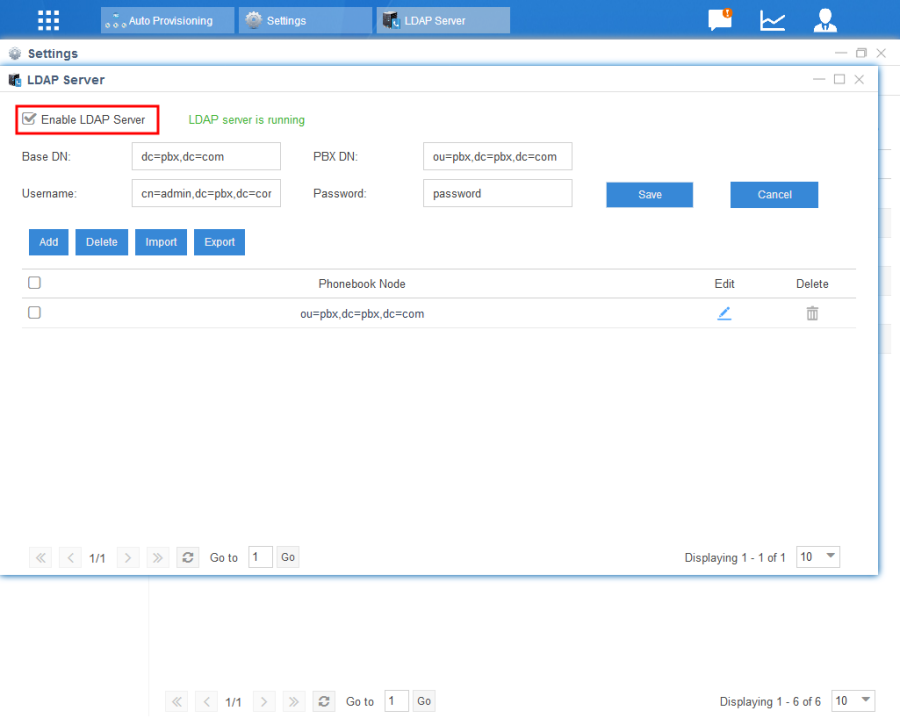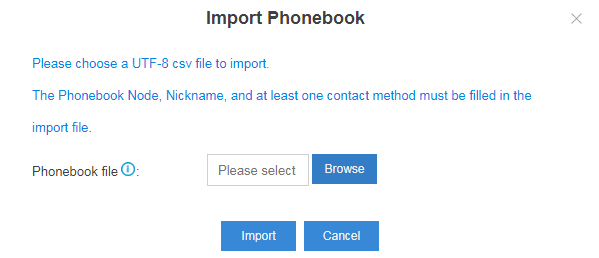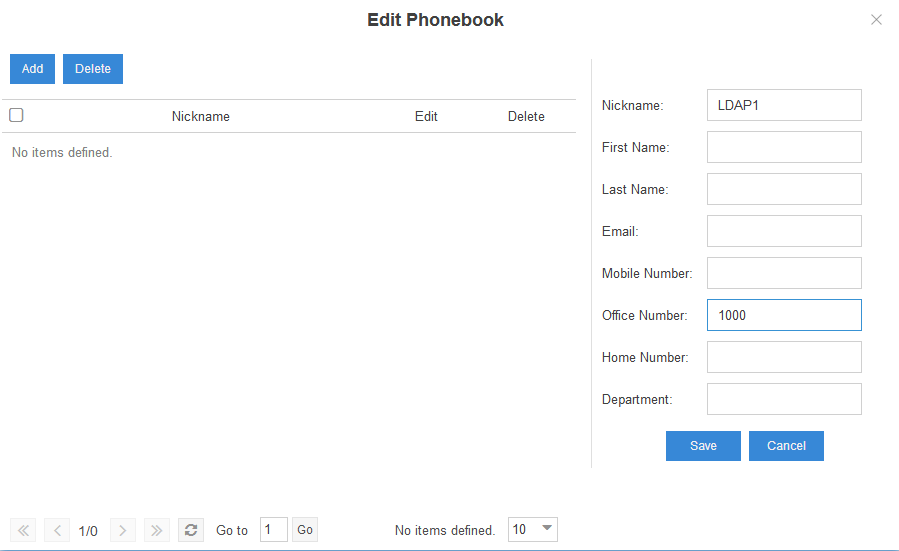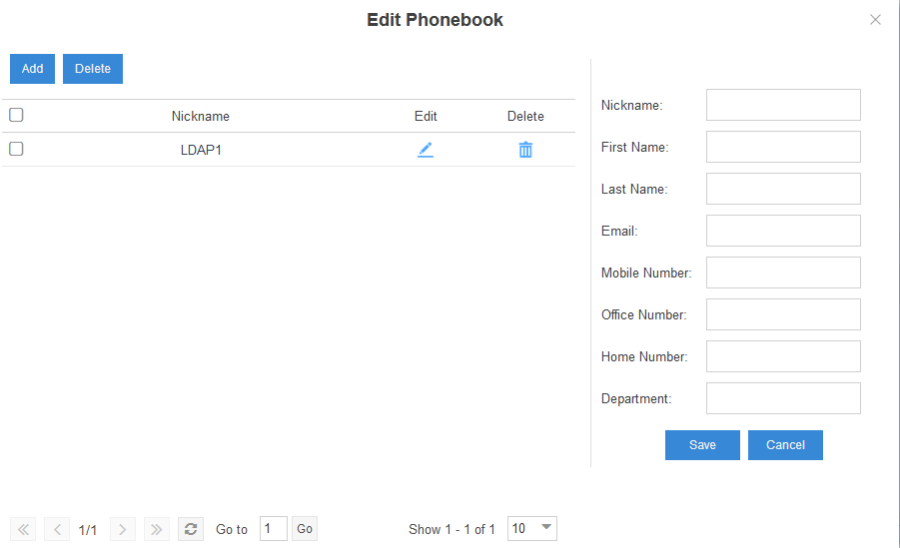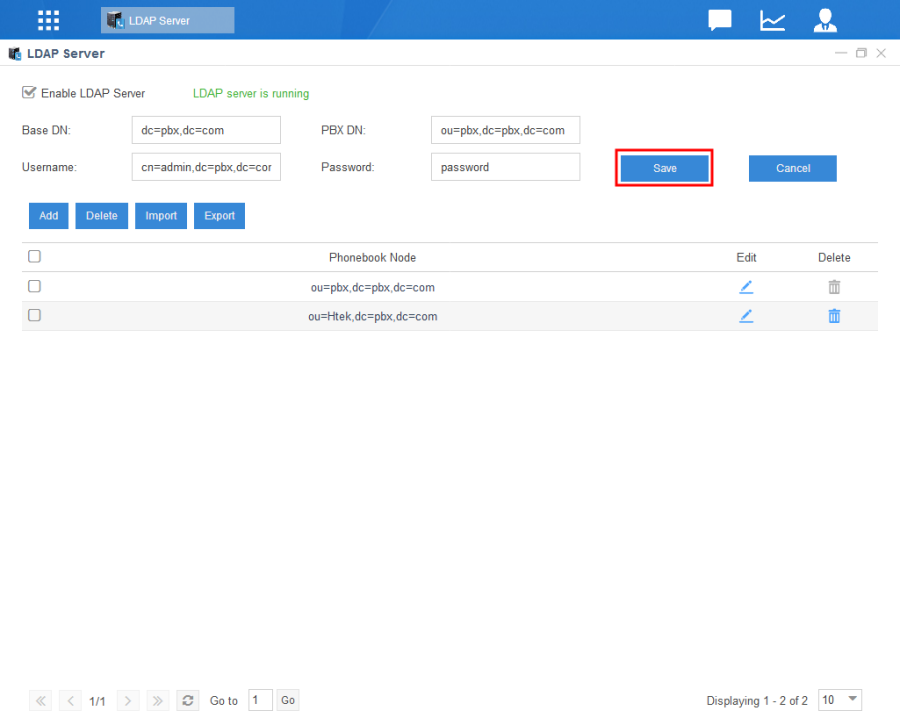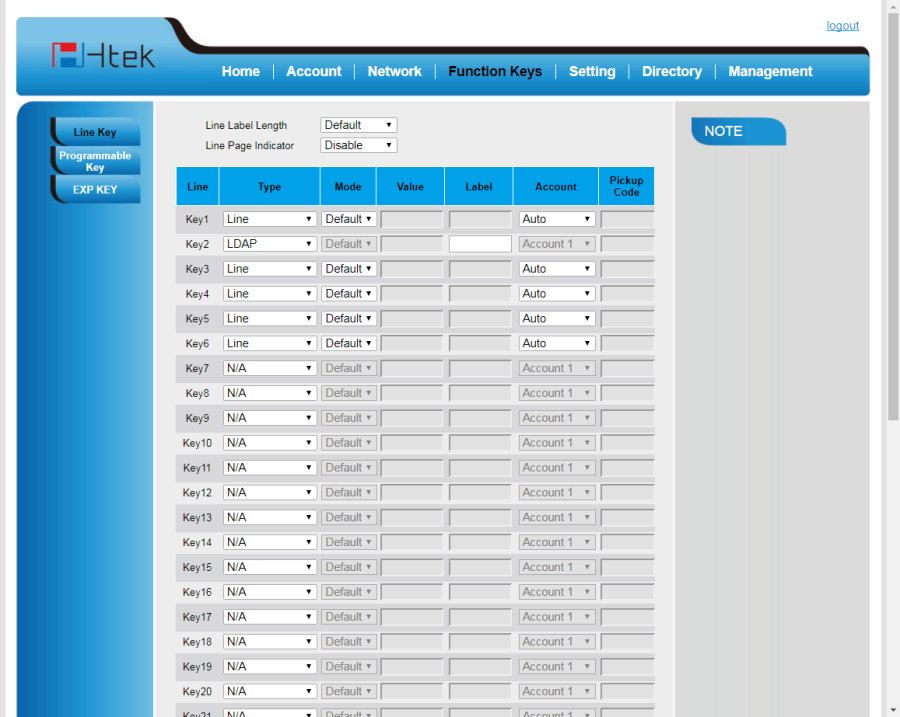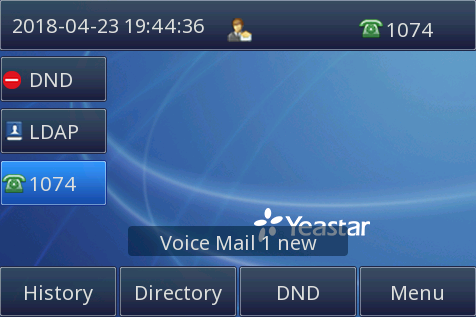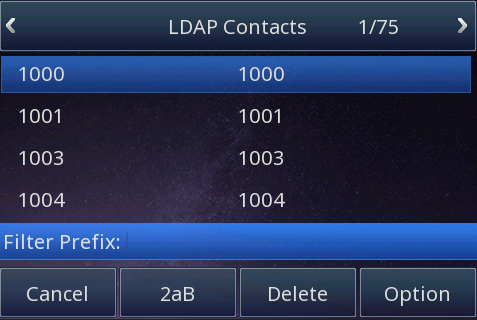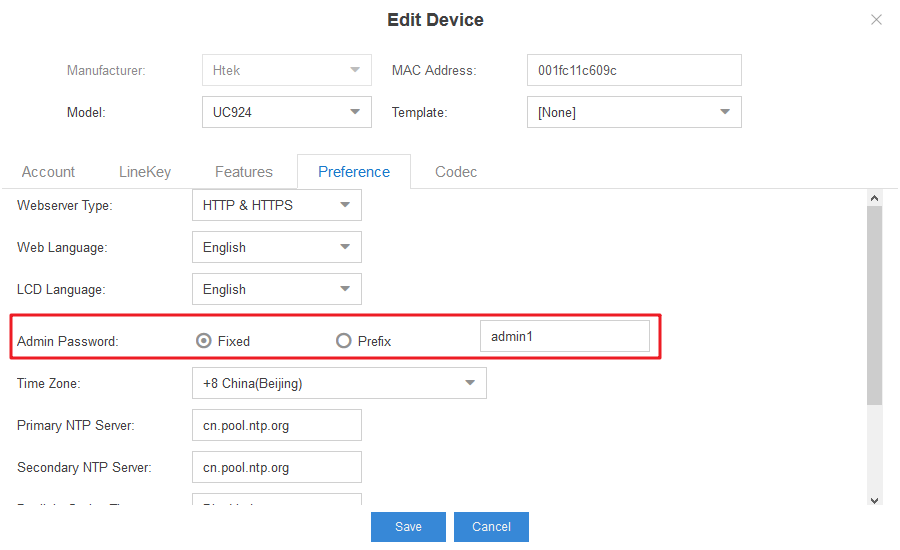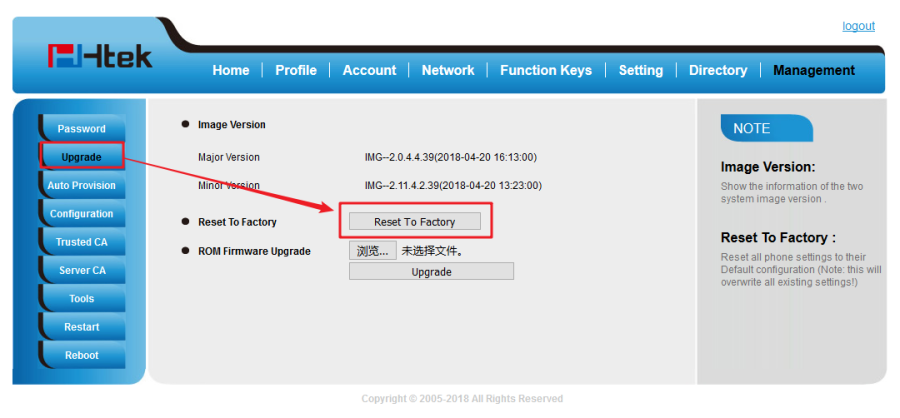| 锚 | ||||
|---|---|---|---|---|
|
| 目录 | ||||
|---|---|---|---|---|
|
About This Guide
Thank you for choosing the Htek IP phones, which are exquisitely designed to provide basic phone features plus advanced business features, such as Call Park, Call Pickup, Intercom and Enhanced Monitor Extension over IP network.
The purpose of this guide is to serve as a basic guidance for provisioning Htek IP phones with Yeastar phone system, including:
Htek 8 Series:
UC802, UC802T, UC803, UC804, UC804T, UC804G, UC806, UC806T, UC806G, UC840, UC842, UC860, UC862;
Htek 9 Series:
UC902, UC903, UC912, UC912G, UC923, UC924, UC924E, UC926, UC926E.
Note: The configuration process outlined in this guide applies to Htek IP phones running firmware version x.0.4.2.23 or later and Yeastar S100 phone system running version 30.5.0.8 or later.
In This Guide
Topics provided in this guide include:
- Chapter 1 Getting Started 2625203
- Chapter 2 Auto-provisioning your Phone
- Chapter 3 Upgrading Firmware 2625203
- Chapter 4 Using Yeastar Integrated Features 2625203
- Chapter 5 Resetting your phone 2625203
Summary of Changes
- V1.0(2017-10-16): Provide a basic guidance for provisioning Htek IP phones with Yeastar phone system.
...
This chapter will show you the basic process of phone's start-up and instructions of the way to get the basic information of the phone. Topics include:
Phone Initialization
After your phone is powered on, the phone will boot up, complete the initialization and check firmware. Please refer to the three phases of the LCD display:
In the process of initializing, the phone will attempt to contact a DHCP server in your network to obtain valid IPv4 network settings (e.g., IP address, subnet mask, default gateway address and DNS address) by default.
...
The way of provision with Yeastar phone system is Provisioning via Plug and play (Local LAN), which is mainly used in the situation where Htek phone and Yeastar phone system are in same subnet.
This chapter provides the following instructions of auto-provisioning with Yeastar phone system and show you how to edit the custom provision template on Yeastar. Topics include:
Provisioning via Plug and play (Local LAN)
...
1. Plug the phone into the network.
2. The phone will send a multicast message across the LAN. This will be picked up by Yeastar Phone System.
3. Enter "Auto-provisioning", and then click "Scan", the phone will show up in the "Device List".
4. Click "Add", and you can add a phone.
5. Click "Bulk Add", and you can add phones of the same model.
6. Click "Edit" or , and assign an extension to it in the Account page.
7. Configure LineKey. You can edit Type, Value, Label and Pickup Code of a key. LineKey has 35 types: Line, SpeedDial, BLF, BLF List, Voicemail, Direct Pickup, Group Pickup, Call Park, Intercom, DTMF, Prefix, Local Group, XML Group, XML Browser, LDAP, BroadSoft Group, Conference, Forward, Transfer, Hold, DND, Redial, Call Return, SMS, Record, URL Record, Paging, Group Listening, Public Hold, Private Hold, Shine Line, Hot Desking, ACD, Zero Touch, MultiCast Paging.
8. Configure Memory Keys Settings. You can edit Type, Value, Line and Pickup Code of a key. Memory Key has 35 types: Line, SpeedDial, BLF, BLF List, Voicemail, Direct Pickup, Group Pickup, Call Park, Intercom, DTMF, Prefix, Local Group, XML Group, XML Browser, LDAP, BroadSoft Group, Conference, Forward, Transfer, Hold, DND, Redial, Call Return, SMS, Record, URL Record, Paging, Group Listening, Public Hold, Private Hold, Shine Line, Hot Desking, ACD, Zero Touch, MultiCast Paging.
Tip: The Memory Keys Settings option is only for UC802, UC802T, UC803, UC803T, UC806, UC806T, UC806G, UC860, UC862
9. Configure Features. You can configure Call Waiting, Auto Redial, Auto Answer, Voicemail, AP Phonebook, Key As Send and Remote Phone Book in this page.
You can enable call waiting, auto redial, auto answer, voicemail and AP phonebook.
Call waiting can let you receive other call when you are talking with someone.
Voicemail can let others leave message to you when your phone number is not available.
If "Key As Send" is selected "#", you can press "#" as send when you make a call.
You can edit phonebook URL and phonebook name to configure Remote Phone Book.
10. Configure Preference. You can set Webserver Type, Language, Admin Password, Time Zone, Primary NTP Server, Secondary NTP Server, Daylight Saving Time, Time Format and Date Format.
Webserver Type is the type to access the web interface.
11. Configure Codec. Htek IP Phone supports PCMA, PCMU, G726-32, G722, iLBC, GSM_FR.
12. Click "Save", "Reboot phone now?" will be shown. Click "Yes", the phone will restart.
13. If the phone has PnP enabled, it will receive a link to a configuration file that records the settings you specify and configures itself.
14. The phone will apply the settings and connect to Yeastar Phone System. The IP phone will be manageable form within the Yeastar Auto Provisioning page.
15. Click "Delete" or , you can delete the configuration in the Yeastar Auto Provisioning page.
...
1. Auto Provisioning→Templates→Add. Fill in name and choose Manufacturer and model. Click "Save".
2. Click . Configure LineKey, Memory Keys Settings, Features, Preference and Codec. Click "Save".
3. You can choose the template and add an extension when you add or edit Device.
4. Click "Save" and the phone with PnP enabled will restart and apply the settings of the selected template.
Upgrading Firmware
Over View
...
1. Auto Provisioning→Firmware Upgrade.
Click "Upload".
2. Click "Browse", choose a rom file matched with the model (fw8xx.rom and fw9xx.rom), and then click "Upload".
3. After uploading, the file's name will be filled in the blank.
4. Check the "Enable Upgrade" option.
5. Auto Provisioning→Device List.
Edit the phone. Click "Save", then "Reboot phone now?" will be shown. Click "Yes" to upgrade firmware.
Or click the IP Address of the phone and you will enter the webserver of the phone. Reboot the phone through the webserver, and it will upgrade.
Using Yeastar Integrated Features
This chapter provides the detail instructions and configurations for the following Yeastar integrated features:
- Basic Setting2625203
- IVR2625203
- Call Forward2625203
- Call Transfer
- Do Not Disturb
- BLF
- Voicemail
- Conference
- Call Park
- Speed Dial
- Queue
- Pickup
- Call Monitor
- Intercom/Paging
- Phonebook2625203
- 2625203
- 2625203
- 2625203
- 2625203
- 2625203
- 2625203
- 2625203
- 2625203
- 2625203
- 2625203
- 2625203
Basic Setting
Over View
This chapter introduces the necessary configuration of account registration and common optional configuration. Topics include:
Account Registration
Add Extensions
...
1. Settings→PBX→Extensions. Click "Add".
2. Set the extension. The extension settings are divided into the following four sections: Basic, Features, Advanced, Call Permission.
You can configure general settings and user information on the Basic page. The type of the extension is usually selected as SIP. You can edit the extension number, call ID, maximum concurrent registrations, registration name and registration password to register on the phone.
Note: The registration password is required to be at least 8 characters and must contain numbers and both uppercase letters and lowercase letters.
You can configure voicemail, call forwarding, mobility extension, monitor settings, ring timeout, maximum call duration and DND on the Features page.
You can configure VoIP settings and IP restriction on the Advanced page. You can select the protocol for transport, the mode for sending DTMF tones and enable SRTP for voice encryption on this page.
You can select outbound routes and configure outbound dialing restriction for this extension on the Call Permission page.
3. Click "Save" to save the settings.
Note: Each time you save the settings; you need to click "Apply" on the right side of the taskbar to make the settings effective.
To add bulk extensions
1. Settings→PBX→Extensions. Click "Bulk Add".
2. Set the extensions. The bulk extensions settings are divided into the following four sections: Basic, Features, Advanced, Call Permission.
The type of the extension is usually selected as SIP. You can configure the start extension number, the number of extensions to be created, the type of registration password, the type of user password, maximum concurrent registrations and the language of voice prompts on the Basic page. The types of registration password are Random, Fixed and Prefix + Extension.
You can configure voicemail, monitor settings, ring timeout, maximum call duration and DND on the Features page.
You can configure VoIP settings and IP restriction on the Advanced page. You can select the protocol for transport, the mode for sending DTMF tones and enable SRTP for voice encryption on this page.
You can select outbound routes on the Call Permission page.
3. Click "Save" to save the settings.
...
This configuration applies that you do not have a fixed Transfer target. So you don't need to enter the transfer extension number when using.
Tip: This configuration is limited by Transfer Mode via DSSkey setting. And you cannot change the Transfer type when you use it unless you select another Transfer Mode here.
2. The value is blank:
This configuration is suitable for dynamically selecting the transfer destination. You can choose the Transfer type when you use it, but you need to manually enter the extension number.
...
- Configure a Line Key as DND.
- Phone's WEB GUI → Setting → Features → Do Not Disturb → Local.
Tip: If you set the phone to DND, all the accounts will not receive any incoming call.
Set one of the accounts to DND
- Configure a Line Key as DND.
- Phone's WEB GUI → Setting → Features → Do Not Disturb → Server/Mixed.
- Fill in the Code set in the Yeastar Server.
Tip: If you like, you can dial the Code manually.
BLF
Over View
You can use BLF to monitor a specific line for status changes on the phone. The BLF key turns into red when the specific line is in use. You can use BLF key to dial out the monitored phone number when the monitored line is idle. You can also pick up calls that are received on the monitored line or transfer a call to the monitored line.
...
1. Add or edit a queue
Settings→Call Features→Queue→Add or Edit
2. Configure the queue.
Number is used to dial into the queue.
Password requires Dynamic Agents to enter "Password" before they can log in to this queue.
Note: Dynamic Agents can dial "Queue number"+"*" to log out the queue.
"Ring Strategy" has six options:
(1) Ring All: ring all available agents simultaneously until one answer.
(2) Least recent: ring the agent which was least recently called.
(3) Fewest Calls: ring the agent with the fewest completed calls.
(4) Random: ring a Random Agent.
(5) Rrmemory: Round Robin with Memory, remembers where it left off in the last ring pass.
(6) Linear: rings agents in the order specified in the configuration file.
"Failover Destination" is the destination when no answer after dialing the queue number.
"Static Agents" are the agents that have logged in the queue.
...
- 1-Way Paging: All the members can only hear the voice of the initiator.
- 2-Way Intercom: All the members can talk and listen to each other.
Tip: You might see the option *Answer. If you have checked this option, once someone press *** on his IP Phone, a dialogue will be established with him and the initiator, along the other members will all automatically exit the Paging.
How to Use
Press the Intercom key or the Paging key, or dial the feature code + extension number.
...
1. Open LDAP Server page.
2. Enable LDAP Server. The default phonebook includes the extensions in the sip server.
Note:
You cannot add or delete the contacts in the default phonebook directly. Go to "Settings→PBX→Extensions" to configure extensions, the phonebook will be automatically updated.
3. If you want to add a phonebook manually, you can click "Add". Fill in the phonebook name. Click "Save".
4. You can also click "Import" to upload a phonebook.
Note:
1. The file to be imported must be a CSV file with UTF-8 encoding. You can open the file with Notepad and save it with UTF-8 encoding.
2. Phonebook Node, Nickname and at least one contact information (Email, Mobile Number, Office Number or Home Number) are required in the CSV file.
3. Phonebook Node cannot be set to "pbx", which is the same with the default phonebook node.
5. Edit the phonebook you add, and add contacts.
5. Save your changes.
6. Login web interface→Directory→LDAP.
Fill in the information referred to the sip server.
7. Function Keys→Line Key
You will see LDAP key in your screen.
...
Press LDAP key, and you can see the LDAP phonebook.
Resetting your phone
Over View
...
To reset the phone via phone user interface(LCD):
1. Enter Menu→Settings→Advanced→Settings→Reset.
The password of Advanced is provisioned by Yeastar phone system.
2. Press the "Enter" softkey or "OK" key.
3. The phone will be reset to factory settings successfully after startup.
Note: Reset of your phone may take a few minutes. Do not power off until the phone has started up successful.
To reset the phone via web interface:
1. Enter Management→Upgrade→Reset To Factory→"All of the configuration will be restored to factory Settings. Are you sure reset to factory?".
The password of the web interface is provisioned by Yeastar phone system.
2. Select "OK".
3. The phone will be reset to factory settings successfully after startup.
Troubshooting
This chapter provides general troubleshooting information to help you solve the problems you might encounter when using your phone. If you require additional information or assistance with your new phone, contact your system administrator.
...
- Make sure that the phone is connect to the same subnet with Yeastar S100.
- Make sure that the model of your phone is supported by Yeastar.
- Make sure that the TFTP server of Yeastar SIP system is enabled.
- To reset the phone as the following steps:
- Press Menu soft key.
- Navigate to Settings and press Enter soft key.
- Select Advanced and press Enter soft key.
- Enter the password (admin by default) and press Enter soft key.
- Select Settings and press Enter soft key
- Select Reset and press Enter soft key.
- Press OK soft key to confirm, the phone will reboot and perform a factory reset.


